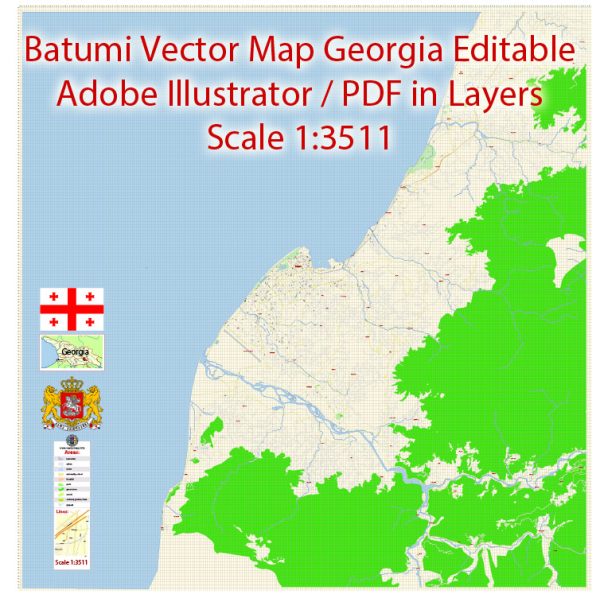Batumi, a coastal city in Georgia, has a rich history of urban development that spans several centuries. Here’s a description of the key milestones in the city’s urban development:
- Ancient Origins: The area around Batumi has been inhabited since ancient times. Greeks established a colony here around the 5th century BC, and it was known as “Bathus” in antiquity. Over the centuries, the region was influenced by various civilizations, including the Romans and Byzantines.
- Ottoman Rule: In the 17th century, the Ottoman Empire took control of the region, and Batumi became an important port city. During this period, the city saw the construction of several mosques, baths, and other Ottoman architectural elements that can still be seen today.
- Russian Influence: Batumi came under Russian control in the 19th century as part of the Russian Empire’s expansion into the Caucasus. Under Russian rule, the city’s infrastructure was improved, and its role as a strategic port was enhanced. The Russian architecture of this era left a lasting imprint on the city.
- Soviet Era: Batumi continued to grow during the Soviet era, with the construction of new buildings, factories, and infrastructure. The city served as a major Soviet port on the Black Sea, and its development was closely tied to the industrial and military needs of the time.
- Post-Soviet Independence: With Georgia gaining independence from the Soviet Union in 1991, Batumi, like many other cities in the country, faced economic and political challenges. The city saw a decline in some sectors, but in the early 21st century, it underwent a resurgence in urban development, partly fueled by tourism and investment.
- Modern Transformation: Batumi has experienced a significant transformation in recent years. A major driver of this transformation has been the construction of modern infrastructure and architectural projects, including luxury hotels, modern skyscrapers, a new boulevard, and the renovation of historic buildings. The city has also become a popular tourist destination, with casinos, restaurants, and entertainment venues.
- Green Initiatives: In recent years, Batumi has made efforts to become a more eco-friendly city. It has implemented green initiatives, such as the development of parks and green spaces, pedestrian-friendly areas, and the promotion of sustainable transportation.
- Cultural Development: Batumi has also invested in its cultural infrastructure, with the construction of new museums, theaters, and cultural centers. These developments have contributed to the city’s cultural vibrancy and artistic scene.
- Port and Transportation: The Port of Batumi remains an essential part of the city’s infrastructure, serving as a key hub for trade and transportation in the region. The city is also well-connected by road, rail, and air, with an international airport that facilitates tourism and commerce.
Overall, Batumi’s history of urban development reflects its evolving role as a strategic port city, its transition from different empires, and its recent resurgence as a dynamic and tourist-friendly destination on the Black Sea coast. The city’s rich history is evident in its diverse architectural styles and cultural influences, making it a fascinating place to explore.


 Author: Kirill Shrayber, Ph.D.
Author: Kirill Shrayber, Ph.D.